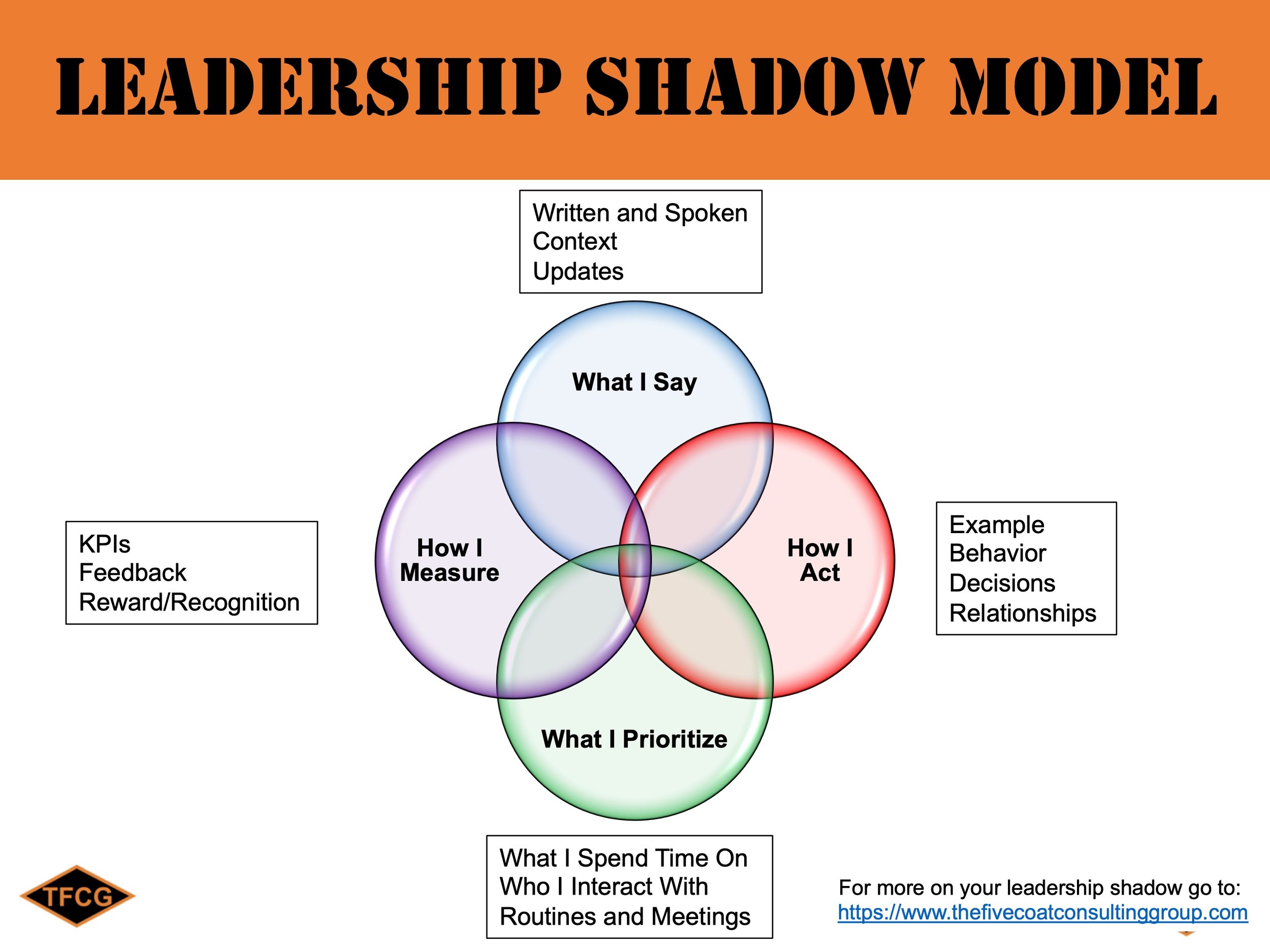Leadership Shadow (#235)
Being a leader is tough. Some say that as a leader you are in a “fishbowl” — everything you say and do or don’t say and do is seen or heard by your team. It’s one of the challenges of being a leader — to be consistent with everything you do as a leader.
Goldman Sachs coined the term Leadership Shadow to describe the impact your leadership makes. Your Leadership Shadow is made up of what you say; how you act; what you prioritize; and how you measure. Another way to think about it is it is the unconscious influence of the manager — for good or bad – the leader has on their team. Your Leadership Shadow goes beyond your personal brand and hallway reputation. It's the culture you create through your actions, decisions, and communications.
Understanding your Leadership Shadow enables you as a leader to consider whether your impact is as clear and powerful as you want it to be. If you want your leadership to make a difference, you must understand your own impact — the shadow you cast. The challenge is that it is hard to see your own shadow, especially its shape, clarity and reach.
"All leaders cast a shadow. The question is whether yours is blocking the sun, or inspiring others with its silhouette to strive for more."
Brad Smith, CEO of Intuit
The Leadership Shadow Model
The Leadership Shadow Model below is simple and practical. Leadership starts at the top. If leaders want to make a difference, they must understand the shadow they cast:
There are four elements of your Leadership Shadow:
What You Say — Your written and spoken words, your non-verbal cues, the context that you set as you send a message. The sayings you repeat or emphasize.
How You Act — Your behaviors, symbols, and relationships. You are a role model for your team both your positive actions/behaviors and your negative ones.
What You Prioritize — What you value. If you say people are the most important thing in the organization, how much time did you spend with your people last week. Your most powerful prioritization tool is your calendar. Review the last month and identify the top five things you spend time on. Are they consistent with your goals? Understanding, monitoring, and enhancing what you spend time on, who you interact with, and your routine of meetings and engagements is critical in developing your leadership shadow.
How You Measure — What you choose to reward, recognize, and what you hold your team accountable for. Understand the second and third-order effects of the key performance indicators you focus on.
How Can I Improve My Leadership Shadow?
Here are three ways you can improve your leadership shadow:
Involve your team and be transparent about the process. Ask them for feedback and get them to think about their own leadership shadow using the same model. Challenge yourself and ask questions like: am I thinking, acting, prioritizing, and measuring consistently? Get some feedback from your your boss. Even better, use a coach, a 360-feedback process, or both.
Do a month-long review of your calendar and understand what you are prioritizing and what you aren’t. If you say you’re part of a people first organization but aren’t spending time with anyone on one-on-ones you are sending a mixed message.
Work with your coach, boss, or mentor to create a development plan for make sure what you say, how you act, what you prioritize, and how you measure is authentic and consistent. The model is all about being authentic and consistency. Start with small changes (see the Kaizen post for more on small changes) and have someone hold you accountable for making the change.
Conclusion
Do you need help creating a better Leadership Shadow? Let's work together to make sure what you say, how you act, what you prioritize, and how you measure is consistent. Hit one of the buttons below to see if executive coaching or a keynote speech to help focus your or your team’s leadership shadow could help.
In the meantime, go on the offense and use your better understanding of your leadership shadow to make you a better leader.


